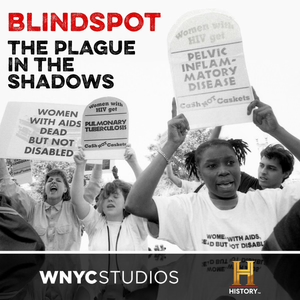
Blindspot
The HISTORY® Channel and WNYC Studios



6 Listeners
All episodes
Best episodes
Seasons
Top 10 Blindspot Episodes
Goodpods has curated a list of the 10 best Blindspot episodes, ranked by the number of listens and likes each episode have garnered from our listeners. If you are listening to Blindspot for the first time, there's no better place to start than with one of these standout episodes. If you are a fan of the show, vote for your favorite Blindspot episode by adding your comments to the episode page.
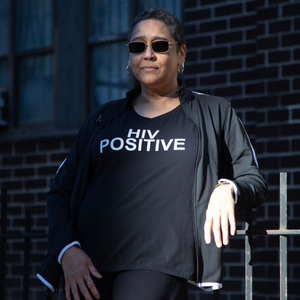
Mourning in America
Blindspot
01/18/24 • 35 min
Valerie Reyes-Jimenez called it “The Monster.” That’s how some people described HIV and AIDS in the 1980s. Valerie thinks as many as 75 people from her block on New York City’s Lower East Side died. They were succumbing to an illness that was not recognized as the same virus that was killing young, white, gay men just across town in the West Village.
At the same time, in Washington, D.C., Gil Gerald, a Black LGBTQ+ activist, saw his own friends and colleagues begin to disappear, dying out of sight and largely ignored by the wider world.
In our first episode of Blindspot: The Plague in the Shadows, we learn how HIV and AIDS was misunderstood from the start — and how this would shape the reactions of governments, the medical establishment and numerous communities for years to come.
Voices in the episode include:
• Valerie Reyes-Jimenez is an HIV-positive woman, activist, and organizer with Housing Works. She saw the AIDS crisis develop from a nameless monster into a pandemic from her home on New York City’s Lower East Side.
• Dr. Larry Altman was one of the first full-fledged medical doctors to work as a daily newspaper reporter. He started at The New York Times in 1969.
• Dr. Anthony Fauci was director of the National Institutes of Health’s National Institute of Allergy and Infectious Disease from 1984 to 2022. Known most recently for his work on Covid-19, Dr. Fauci was also a leading figure in the fight against HIV and AIDS.
• Gil Gerald is a Black HIV and AIDS activist and writer, who co-founded the National Coalition of Black Lesbians and Gays.
• Phill Wilson is the founder of the Black AIDS Institute, AIDS policy director for the city of Los Angeles at the height of the epidemic, and a celebrated AIDS activist in both the LGBTQ+ and Black communities since the early 1980s.
• Dr. Margaret Heagarty ran the pediatrics department of Harlem Hospital Center for 22 years. She died in December 2022.
Blindspot is a co-production of The HISTORY® Channel and WNYC Studios, in collaboration with The Nation Magazine.
A companion photography exhibit by Kia LaBeija featuring portraits from the series is on view through March 11 at The Greene Space at WNYC. Photography by Kia LaBeija is supported in part by the Economic Hardship Reporting Project.

3 Listeners
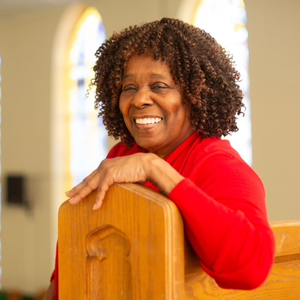
01/25/24 • 39 min
It’s the 1980s — Harlem, USA — and the 17th floor of the area’s struggling public hospital is filling up with infants and children who arrive and then never leave. Some spend their whole lives on the pediatric ward, celebrating birthdays, first steps and first words with the nurses and doctors who’ve become their surrogate family. Welcome to Harlem Hospital at the height of the HIV and AIDS epidemics.
When the nurses and doctors at this community hospital first began to see infants suffering from an unusual wasting disease, they were alarmed. They had heard that a strange new illness was killing gay men, but no one was talking about women and children. Soon, however, it became clear that HIV was sweeping through Harlem, sickening mothers who then passed it — unknowingly — to their kids. As the crisis grew, AIDS turned the pediatrics ward of Harlem Hospital into a makeshift home — and a makeshift family — for kids who were either too sick to go home, or who no longer had families to go home to.
Voices in the episode include:
• Dr. Margaret Heagarty was a doctor who ran the pediatric department at Harlem Hospital Center for nearly 20 years. She died in 2022. Archival interview with Margaret Heagarty comes from the Columbia Center for Oral History.
• Dr. Stephen Nicholas was a pediatrician at Harlem Hospital Center for two decades.
• Maxine Frere, a lifelong Harlem resident, is a retired nurse who spent the entirety of her 40-year career at Harlem Hospital Center.
• Monica Digrado was a pediatric nurse at Harlem Hospital Center.
• Victor Reyes was born at Harlem Hospital Center and spent much of his childhood receiving treatment and care at the hospital’s pediatric AIDS unit.
Blindspot is a co-production of The HISTORY® Channel and WNYC Studios, in collaboration with The Nation Magazine.
A companion photography exhibit by Kia LaBeija featuring portraits from the series is on view through March 11 at The Greene Space at WNYC. The photography for Blindspot was supported by a grant from the Economic Hardship Reporting Project, a nonprofit organization that promotes coverage of social inequality and economic justice.

1 Listener

Bonus Episode: The Double Life
Blindspot
09/25/20 • 34 min
Emad Salem has been called one of the most successful undercover agents in the history of the FBI. In a rare interview, Salem opens up about the personal price he paid for foiling the Landmarks Plot and bringing down a dangerous terrorist cell.
It’s been more than 20 years since Salem testified against terrorists linked to Al Qaeda in open court; he’s been in hiding ever since. He tells WNYC’s Jim O’Grady what it was like to win the confidence of terrorists who, if they’d found him out, might have killed him on the spot. He recounts wild, heart-stopping episodes in which he’s an inch away from disaster but then saves himself through a combination of bravado and fast-thinking. Salem also talks about the strains borne by his wife and two children since he agreed to become a mole. All of which begs the question, “Was it worth it?”
1 Listener
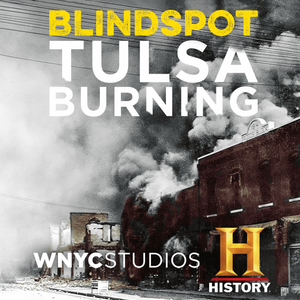
Episode 1: The Past Is Present
Blindspot
05/28/21 • 35 min
This episode contains descriptions of graphic violence and racially offensive language.
On May 31, 1921, Tulsa, Oklahoma’s Greenwood District was a thriving Black residential and business community — a city within a city. By June 1, a white mob, with the support of law enforcement, had reduced it to ashes. And yet the truth about the attack remained a secret to many for nearly a century.Chief Egunwale Amusan grew up in Tulsa — his grandfather survived the attack — and he’s dedicated his life to sharing the hidden history of what many called “Black Wall Street.” But Dr. Tiffany Crutcher, also a descendant of a survivor, didn’t learn about her family history or the massacre until she was an adult. Together, they’re trying to correct the historical record. As Greenwood struggles with the effects of white supremacy 100 years later, people there are asking: in this pivotal moment in American history, is it possible to break the cycle of white impunity and Black oppression?

1 Listener
1 Comment
1
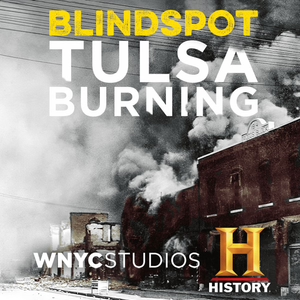
Episode 6: The Choice
Blindspot
10/07/20 • 45 min
Osama bin Laden began his life as the son of a contractor made fabulously wealthy by the Saudi Arabian oil boom. From an early age, bin Laden shows himself to be different from his Western-leaning family. He forges a close relationship with the radical preacher Abdullah Azzam, who he joins as a mujahideen fighter in the Afghan War. Bin Laden will eventually be lionized by some in the Muslim world as the man who gave up the comforts of his upbringing to risk his life in battle -- and steered a share of his family wealth toward the cause. Once the invading Soviets leave Afghanistan in defeat, bin Laden decides to fight a holy war against the West. But how? His longtime mentor, Abdullah Azzam, advises caution. But a new advisor named Ayman al-Zawahiri pushes bin Laden to pursue a more far-reaching strategy. Bin Laden’s choice between the two men will determine the path of the newly formed Al Qaeda, and of worldwide militant jihad.
1 Listener
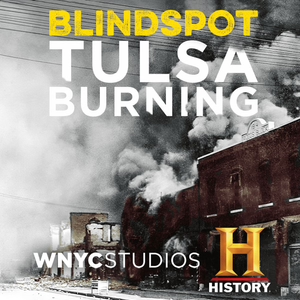
Episode 5: The Idea
Blindspot
09/30/20 • 50 min
The World Trade Center was built with soaring expectations. Completed in 1973, its architect, Minoru Yamasaki, hoped the towers would stand as “a representation of man’s belief in humanity” and “world peace.” He even took inspiration from the Great Mosque in the holy city of Mecca with its tall minarets looking down on a sprawling plaza. What he did not expect was that the buildings would become a symbol to some of American imperialism and the strangling grip of global capitalism.
Our story picks up in Manila -- January 6th, 1995 -- where police respond to an apartment fire and uncover a plot to assassinate the Pope. A suspect gives up his boss in the scheme: Ramzi Yousef, the mastermind of the 1993 World Trade Center bombing. Yousef has been on the run for two years and has disappeared again. Port Authority Detective Matthew Besheer and FBI Special Agent Frank Pellegrino fly to Manila to follow his trail. They learn that Yousef has a horrifying attack in the works involving bombs on a dozen airplanes, rigged to explode simultaneously. President Bill Clinton grounds all U.S. flights from the Pacific as the era of enhanced airline security begins. Yousef’s plot is foiled. But what it reveals about his intentions is chilling.
1 Listener
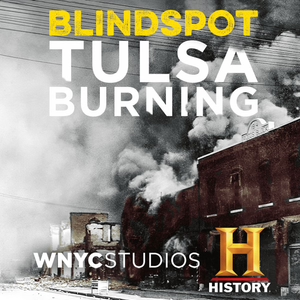
Episode 8: The Ghost
Blindspot
10/21/20 • 52 min
“The Ghost” is the nickname that Port Authority Detective Matthew Besheer and FBI Special Agent Frank Pellegrino give to the man they’ve been hunting for years but can’t quite catch: Khalid Sheikh Mohammed -- also known as KSM. He’s the uncle of Ramzi Yousef, and he picks up his plot to hijack planes and fly them into buildings. Without knowing his specific plans, Pellegrino and Besheer are acutely aware of the scope of KSM’s ambition, and the danger he presents to both military and civilian targets. But once again, a carefully considered plan to diffuse the threat goes awry and he melts into the ether. Soon he’ll take a meeting with Osama bin Laden and lay out the framework for what will become known as the attacks on 9/11/2001. In this final episode of the series, we trace the final steps to that fateful day.
1 Listener
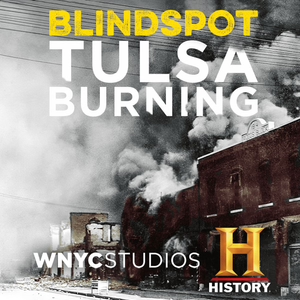
Episode 4: The Sheikh
Blindspot
09/23/20 • 40 min
FBI informant Emad Salem is close to not only the Blind Sheikh but his trusted lieutenant, an ambitious terrorist named Siddig Ibrahim Siddig Ali. Salem soon finds himself at the Statue of Liberty with Siddig Ali; their goal is not to enjoy their visit but figure out how to destroy it with a bomb. It is one of five targets in what will come to be known as The Landmarks Plot -- a plan to cause mass casualties by attacking not only tourist sites but heavily trafficked crossings such as the Holland Tunnel and George Washington Bridge. Salem convinces Siddig Ali and his accomplices to make their bombs in an abandoned Queens warehouse that has secretly been wired with FBI cameras and other recording devices. As the plans near completion, the plotters are arrested. They will eventually be convicted and sent to prison. Law enforcement now better understands that the threat of terror against America is ongoing and international ... which makes it even more difficult to fight.
1 Listener
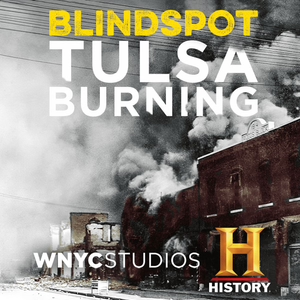
Episode 7: The Falcon Hunt
Blindspot
10/14/20 • 55 min
It’s the late 1990s and the question tying policy makers at the highest levels of the U.S. government into knots: How should we respond to a relatively scattered group that is pulling off bloody attacks on our foreign installations and soldiers? In other words, how to deal with Al Qaeda? This is the group responsible for terror attacks such as the deadly bombings of the U.S. embassies in Kenya and Tanzania. And its leader, Osama bin Laden, has promised more attacks. In this episode, we hear from officials at the center of the debate about what to do. We tell the story of a time when the CIA was sure it had bin Laden in their sights, but couldn’t get the go-ahead from the White House to pull the trigger. It’s a tale of bureaucratic hesitation and excruciating near misses ... as the clock winds down toward the biggest attack of all.
1 Listener
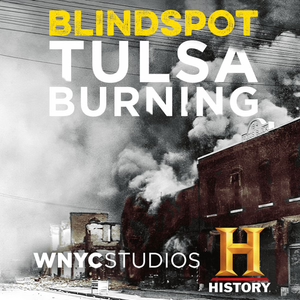
Episode 2: The Mole
Blindspot
09/09/20 • 45 min
In 1981, the radical cleric Omar Abdel-Rahman -- known as The Blind Sheikh -- inspires the assassination of Egyptian president Anwar el-Sadat at a military ceremony. One of the soldiers present is Emad Salem. He swears revenge against the Sheikh.
Cut to: 1990. Salem is retired from the Egyptian army and scratching out a living as an immigrant in New York. NYPD Detective Louis Napoli and FBI Special Agent John Anticev approach him with a potentially life-altering request. Would he be willing to infiltrate a terrorist cell in Brooklyn led by the Blind Sheikh himself? Salem agrees and, relying on his street smarts and military experience, becomes a trusted member of the cell. He’s on the brink of uncovering a major plot when FBI supervisors make a disastrous decision.
1 Listener
Show more best episodes

Show more best episodes
FAQ
How many episodes does Blindspot have?
Blindspot currently has 26 episodes available.
What topics does Blindspot cover?
The podcast is about Oklahoma, Black, Society & Culture, Street, History, Documentary, Podcasts and Race.
What is the most popular episode on Blindspot?
The episode title 'Mourning in America' is the most popular.
What is the average episode length on Blindspot?
The average episode length on Blindspot is 34 minutes.
How often are episodes of Blindspot released?
Episodes of Blindspot are typically released every 7 days.
When was the first episode of Blindspot?
The first episode of Blindspot was released on Aug 31, 2020.
Show more FAQ

Show more FAQ